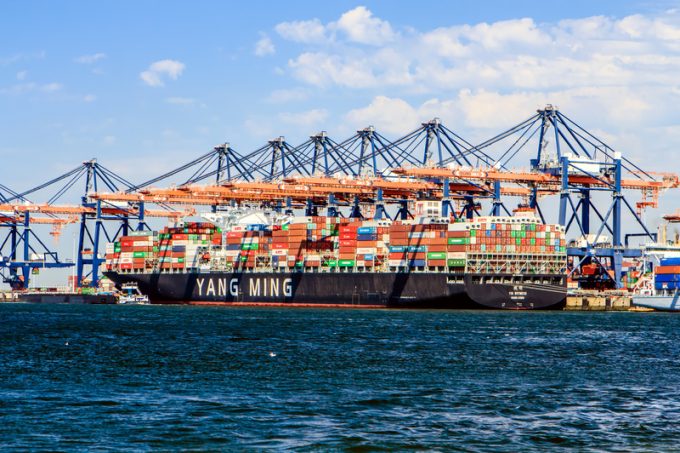Container spot rate rises moderate – peak in sight?
In the surest sign yet that soaring container spot freight rates may have reached something ...
TFII: SOLID AS USUALMAERSK: WEAKENINGF: FALLING OFF A CLIFFAAPL: 'BOTTLENECK IN MAINLAND CHINA'AAPL: CHINA TRENDSDHL: GROWTH CAPEXR: ANOTHER SOLID DELIVERYMFT: HERE COMES THE FALLDSV: LOOK AT SCHENKER PERFORMANCEUPS: A WAVE OF DOWNGRADES DSV: BARGAIN BINKNX: EARNINGS OUTODFL: RISING AND FALLING AND THEN RISING
TFII: SOLID AS USUALMAERSK: WEAKENINGF: FALLING OFF A CLIFFAAPL: 'BOTTLENECK IN MAINLAND CHINA'AAPL: CHINA TRENDSDHL: GROWTH CAPEXR: ANOTHER SOLID DELIVERYMFT: HERE COMES THE FALLDSV: LOOK AT SCHENKER PERFORMANCEUPS: A WAVE OF DOWNGRADES DSV: BARGAIN BINKNX: EARNINGS OUTODFL: RISING AND FALLING AND THEN RISING

Taiwanese ocean carrier Yang Ming produced a net profit of $6.06bn in 2022, but by the fourth quarter, its figures were heading towards breakeven.
Last year’s record profit was achieved from a turnover of $12.61bn, however, in Q4 revenue dropped 42%, compared with the same quarter of 2021, to $1.96bn.
In December alone, Yang Ming’s revenue plunged a huge 53% as collapsing spot rates dragged down higher contract rates.
And the carrier’s outlook is far from optimistic for early 2023, but does see reasons to be positive for the second half of the year.
“As China lifts restrictions and with the gradual reduction in inventory, this might stimulate overall economic activity,” said Yang Ming. “These factors are likely to create a relatively positive environment for the shipping industry in H2.”
Yang Ming said it would “continue to strengthen its business strategy by exploring new business opportunities”, as well as “optimising its cargo structure and improving space utilisation”.
According to Alphaliner data, Yang Ming is the ninth-ranked global container line in terms of capacity, behind South Korea’s HMM and ahead of Israeli carrier Zim, with apacity of 705,614 teu and a fleet of 93 ships, of which 42 are on charter.
Unlike its peers, its current orderbook is blank, albeit that earlier in the year the carrier was said to be on the verge of ordering five 15,000 teu LNG-powered vessels.
“We have drawn up a shipbuilding plan based on the replacement of old ships and business needs, dependant on the development of environmental regulations, availability of alternative fuels and engine technologies,” a spokesperson told The Loadstar in January.
Meanwhile, Container Trade Statistics (CTS) has released its January data for loaded container trades, which was down 9.9% globally, year on year, suggesting that ocean carriers are in for a very tough quarter.
Specifically, CTS’s transpacific headhaul teu count was down by 23% year on year, while loaded containers from Asia to North Europe fell 17%. Westbound transatlantic volumes declined by only 2%.
Chinese New Year fell on 22 January, it was 1 February in 2022, which certainly would have had some impact on volumes, but nevertheless the CTS data reveal the extent of the downturn in the liner industry.
“It proves that the slump in demand that picked up in earnest from H2 22 has carried over to this year, and will make the task of matching supply with demand even trickier,” commented Drewry’s Simon Heaney.
Picking up on the relatively low decline in volumes on the transatlantic, Mr Heaney said the market was “now so oversaturated” that Drewry estimates headhaul load factors on the route are now at just 60%.
“That only spells one thing: lower rates,” said Mr Heaney.
Xeneta’s XSI transatlantic component has fallen another 7.5% this week, to $4,776 per 40ft, but remains highly elevated from an average rate historically for the trade, of around $2,000 per 40ft.
Comment on this article